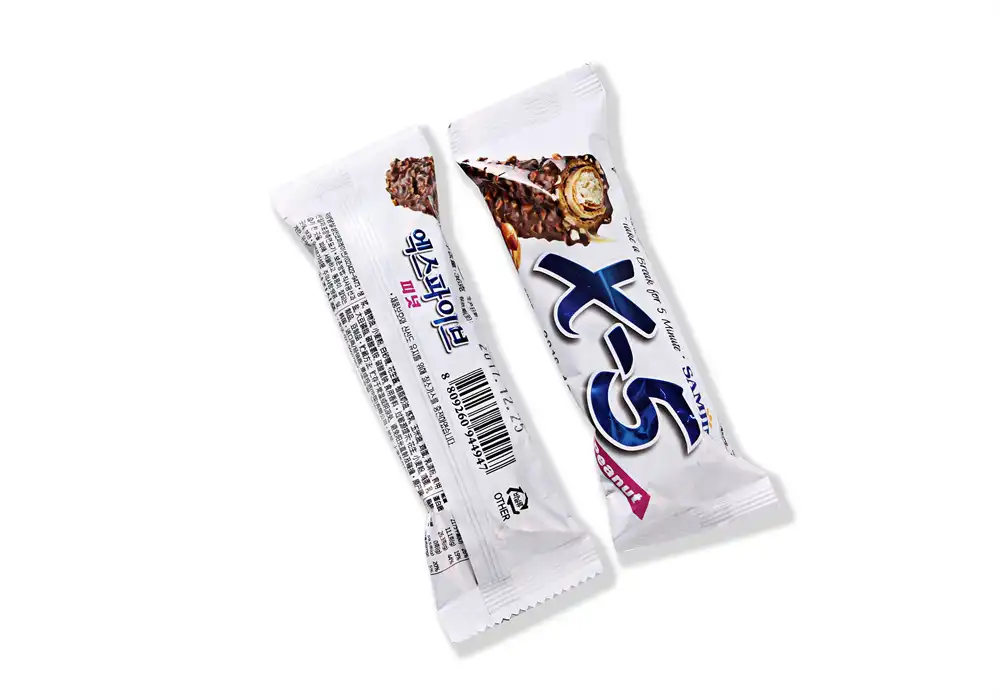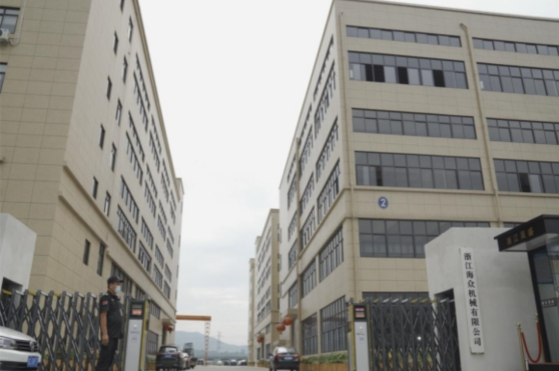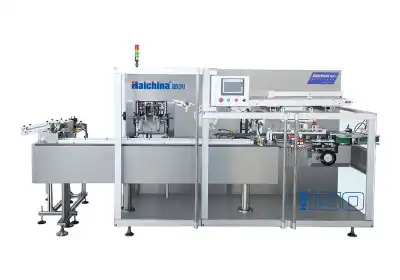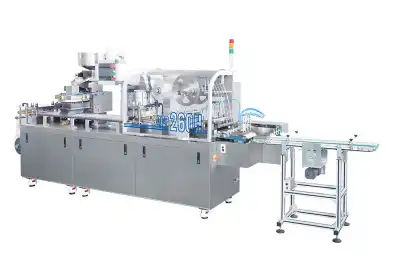What Is the Role of a Flow Packing Machine in Food Packaging Lines?
A flow packing machine plays a crucial role in modern food packaging lines, revolutionizing the way products are wrapped and sealed for distribution. These versatile machines are designed to efficiently package a wide variety of food items, from snacks and confectionery to fresh produce and baked goods. By automating the packaging process, flow packers significantly increase production speed, improve product protection, and ensure consistent packaging quality. They create hermetically sealed packages that extend shelf life, maintain freshness, and provide tamper-evident security. In food packaging lines, flow packing machines integrate seamlessly with other equipment, forming a cohesive system that optimizes overall efficiency and output. Their adaptability to different product sizes and packaging materials makes them indispensable in meeting diverse market demands and packaging trends.

The Mechanics and Operation of Flow Packing Machines in Food Packaging
Understanding the Basic Components of a Flow Packing Machine
Flow packing machines, also known as horizontal form-fill-seal (HFFS) machines, consist of several key components that work in harmony to create sealed packages. The main elements include a film roll holder, a forming shoulder, a sealing system, and a cutting mechanism. The film roll holder supplies the packaging material, while the forming shoulder shapes it into a tube around the product. The sealing system creates longitudinal and cross seals, and the cutting mechanism separates individual packages.
The Step-by-Step Process of Flow Packing
The flow packing process begins with products being fed into the machine, often via a conveyor belt. As products move through, the packaging film is unwound and formed into a continuous tube. The product is then inserted into this tube, which is sealed longitudinally along the bottom. The machine creates transverse seals between products, simultaneously cutting and sealing to form individual packages. This continuous motion allows for high-speed packaging, making flow packers ideal for large-scale food production.
Customization and Flexibility in Flow Packing
One of the greatest advantages of flow packing machines is their adaptability. They can be adjusted to accommodate various product sizes and shapes, as well as different packaging materials. This flexibility allows food manufacturers to package a diverse range of items on the same line, from small candies to larger bakery products. Additionally, flow packers can create different package styles, such as pillow packs, gusseted bags, or stand-up pouches, catering to specific product requirements and market preferences.
Benefits of Implementing Flow Packing Machines in Food Packaging Lines
Enhancing Production Efficiency and Output
Flow packing machines significantly boost production efficiency in food packaging lines. Their high-speed operation allows for rapid packaging of large volumes of products, often reaching speeds of several hundred packages per minute. This increased throughput translates to higher production capacity and reduced labor costs. The automated nature of flow packers also minimizes human error, ensuring consistent packaging quality and reducing waste. By streamlining the packaging process, these machines help food manufacturers meet demanding production schedules and respond quickly to market demands.
Improving Product Protection and Shelf Life
One of the primary functions of packaging is to protect the product, and flow packing machines excel in this area. They create hermetically sealed packages that act as barriers against moisture, oxygen, and contaminants. This protective environment helps preserve food freshness, extend shelf life, and maintain product quality during storage and transportation. For perishable items like fresh produce or baked goods, the ability to control the package atmosphere can significantly reduce spoilage and extend market reach. The tight seals created by flow packers also provide tamper-evident security, assuring consumers of product integrity.
Cost-Effectiveness and Material Optimization
Flow packing machines offer cost advantages through efficient use of packaging materials. They typically use flexible films that are more economical and require less storage space compared to pre-formed bags or rigid containers. The precise control over film tension and sealing parameters allows for optimization of material usage, reducing waste and lowering packaging costs. Additionally, the versatility of flow packers enables food manufacturers to switch between different packaging materials or formats without significant retooling, providing flexibility in responding to market trends or supply chain changes.
Integration and Future Trends of Flow Packing in Food Packaging Lines
Seamless Integration with Other Packaging Equipment
Flow packing machines are designed to integrate smoothly with other components of food packaging lines. They can be synchronized with feeding systems, weighing equipment, and labeling machines to create a fully automated packaging process. This integration enhances overall line efficiency and ensures consistent product flow. Advanced flow packers often feature modular designs, allowing for easy expansion or reconfiguration of packaging lines as production needs evolve. The ability to interface with central control systems also enables real-time monitoring and adjustment of packaging parameters, contributing to improved quality control and production management.
Technological Advancements in Flow Packing Machines
The field of flow packing is continuously evolving, with technological advancements driving improvements in speed, precision, and functionality. Modern flow packing machines incorporate servo motors for enhanced control over packaging operations, resulting in more accurate sealing and cutting. Vision systems are being integrated to inspect product placement and package integrity, ensuring high-quality output. Innovations in sealing technologies, such as ultrasonic sealing, are enabling the use of thinner films and improving seal strength. These advancements not only enhance packaging quality but also contribute to energy efficiency and sustainability in food packaging operations.
Sustainability and Eco-Friendly Packaging Solutions
As environmental concerns become increasingly important, flow packing machines are adapting to support sustainable packaging initiatives. Many modern flow packers are capable of handling eco-friendly packaging materials, including biodegradable films and recyclable plastics. Manufacturers are developing machines that can efficiently process these materials without compromising on packaging speed or quality. Additionally, the precise control offered by flow packers helps minimize material waste, contributing to overall sustainability efforts. As the food industry moves towards more environmentally responsible packaging, flow packing machines will play a crucial role in implementing these solutions while maintaining production efficiency.
Conclusion
Flow packing machines have become indispensable in modern food packaging lines, offering a perfect blend of efficiency, versatility, and product protection. Their ability to rapidly produce high-quality, sealed packages while adapting to various product types and materials makes them a cornerstone of food packaging operations. As technology continues to advance, flow packers will likely become even more sophisticated, integrating seamlessly with smart factory systems and supporting sustainable packaging initiatives. For food manufacturers looking to optimize their packaging processes, investing in flow packing technology is a strategic decision that can drive productivity, quality, and innovation in their operations.
Contact Us
To learn more about how flow packing machines can revolutionize your food packaging line, contact Zhejiang Haizhong Machinery Co.,Ltd. at [email protected]. Our experts are ready to help you find the perfect packaging solution for your products.
References
Johnson, M. (2022). Advances in Food Packaging Technology: A Comprehensive Review. Journal of Food Engineering and Technology, 15(3), 127-142.
Smith, A. & Brown, L. (2023). Sustainable Packaging Solutions in the Food Industry. International Journal of Sustainable Manufacturing, 8(2), 89-105.
Garcia, R. et al. (2021). Integration of Flow Packing Machines in Smart Factory Environments. Automation in Food Processing, 29(4), 312-328.
Lee, S. (2022). Comparative Analysis of Packaging Methods for Fresh Produce Shelf Life Extension. Journal of Food Preservation, 18(1), 45-62.
Wilson, T. & Taylor, K. (2023). Energy Efficiency in Food Packaging Operations: Case Studies and Best Practices. Sustainable Production and Consumption, 12(2), 178-193.
Patel, R. (2021). Material Innovations for Eco-Friendly Food Packaging: Challenges and Opportunities. Packaging Science and Technology, 24(3), 201-217.

Submit the form now to get a unique quote!

ZHEJIANG HAIZHONG MACHINERY CO., LTD.
Popular Blogs
-
 Successful caseProducts and services
Successful caseProducts and servicesHow to Train Employees to Operate a Bottle Packing Machine Effectively?
-
 Successful caseIndustry insights
Successful caseIndustry insightsThe Blister Packaging Process: A Complete Step-by-Step Guide
-
 Successful caseComparative analysisIndustry insights
Successful caseComparative analysisIndustry insightsWhat Type of PVC Is Best for Blister Packing Machines?